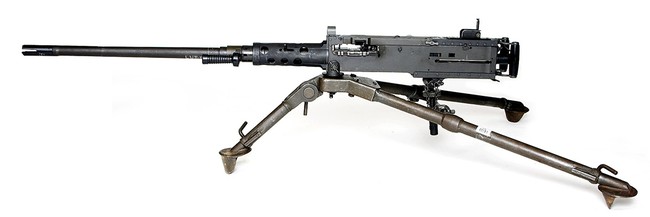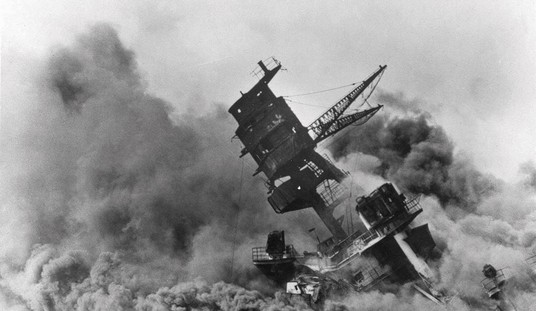Ma Deuce
Since the Industrial Revolution gave us repeating rifles and brass cartridges, and since the 20th century gave us the machine gun, how many weapons have been in service for almost 100 years? John Browning – the man who gave us the Colt-Browning 1911 pistol, which is still, today, after more than a century, one of the finest martial sidearms available – gave us another immortal piece of martial hardware. That weapon would be the M2 .50 caliber machine gun, first adopted by the U.S. in 1933.
And why is the M2 still in service? Because no one has ever made a better heavy machine gun. John Browning stands alone – although he had some significant help in this case.
History
To understand the development of this piece, we have to go back to the Great War, and the introduction of the machine gun and the tank into modern warfare. In 1918, the heaviest machine guns fired the inestimable Caliber .30, Model of 1906 round, but with the advent of armor, the U.S. War Department saw the need for something that would deal with the armored vehicles of the day. General of the Armies John “Blackjack” Pershing had personally asked the Army Ordnance Department to develop a machine gun with a bore diameter of at least .50 caliber, and a muzzle velocity of at least 2,700 fps. After several aborted attempts, including trying to adapt experimental Colt machine guns for the French 11mm Gras round, the Army decided to look to the greatest gun designer of his time – possibly any time – John Browning. Few people have had the impact on firearms design that John Browning had, even if some of his creations are being unfairly disposed of today.
See Related: Canada to Destroy Thousands of Classic Browning Hi-Power Pistols
So they turned to the Maestro, and as usual, John Browning delivered. He took the .30-06 case, already proven as a machine-gun round, and upsized it; thus was born the famous .50 BMG – Browning Machine Gun. Browning and engineer Fred T. Moore designed the first heavy machine gun, which was, essentially, an upsized and modified version of the M1919 Browning .30 caliber machine gun: The water-cooled M1921 Browning machine gun.
But the heavy water-jacketed version wasn’t amenable to placement in aircraft. The Army experimented with the M1921, but development was stymied when John Browning suddenly passed away in 1926. A designer named S.H. Green looked at the M1921 and considered how to adapt the piece for a variety of uses, modifying the receiver to accommodate different barrels and allowing for feeding from either side of the receiver, making installation in aircraft wings possible.
The result was the M2, known widely in the U.S. military as Ma Deuce. Production started immediately, with Colt and FN Herstal making the first production guns. General Dynamics, U.S. Ordnance, and Ohio Ordnance have also built the Ma Deuce.
 Deployment
Deployment
I’ve been fortunate enough to have fired the Ma Deuce on several occasions while wearing Uncle Sam’s colors. It’s quite an experience; if any firearm will make you feel like Thor Odinson, God of Thunder, it’s the Ma Deuce. The big wooden grips, the big spade trigger, and when you fire, you get this great, thundering SLAM SLAM SLAM of thumb-sized .50 caliber rounds going downrange. On one occasion, we were shooting at wrecked trucks that had been towed out onto the impact area to serve as targets. While the .30-caliber M60 punched holes in the trucks, the Ma Deuce rounds blasted chunks of metal into the air. The power difference is palpable when firing both pieces. The M2 is supposed to be an “anti-equipment” as opposed to an anti-personnel weapon, but that’s largely a canard; in war, one generally isn’t offered the opportunity to be that picky. And the old myth about the Geneva Convention outlawing the use of the .50 cal against personnel, that’s a canard as well; the Convention does not regulate weapons use, and the Hague Conventions, which do, were put in place before the wide use of .50 caliber and equivalent machine guns, and makes no mention of them.
And while the M2 is well-suited to taking out light armor and soft-side vehicles – the round will punch through an engine block – it’s also a great area-suppression weapon, and let’s be fair when you take out a vehicle with a Ma Deuce, you will likely be revoking the birth certificates of any bad guys inside that vehicle.
There are several variants of the Ma Deuce, including versions intended for aircraft use and, most awesomely, the M45 Quadmount, or the Quad Fifty, which is four times the awesome of the Ma Deuce mounted on a vehicle, pouring 2,000 thumb-sized bullets per minute at low-flying aircraft or vehicles.
American forces - and our allies - have used the M2 widely, in every major and many minor conflicts from WW2 to date.
See Related: Biden Places a Hold on Shipments of Arms and Ammunition to Israel
The Competition
Success breeds competition, and the Ma Deuce is no exception. Throughout most of the Cold War, the Warsaw Pact’s counters to the M2 were the NSV machine gun, firing a 12.7mm round that was pretty close to the .50BMG in performance, along with the older DShK. China has the Type 77 heavy machine gun, and there are variants and adaptations of these pieces all around the world – none of which have the long, long service history of the M2.
As Things Stand
The Browning M2 is, after 90 years, the best heavy machine gun in the world. It is reliable, powerful, and adaptable, and remains in use around the world. And once again, after nine decades, we see another example of the magnificent mind of the Maestro – John Moses Browning – and in this case, a huge assist from Fred T. Moore.














